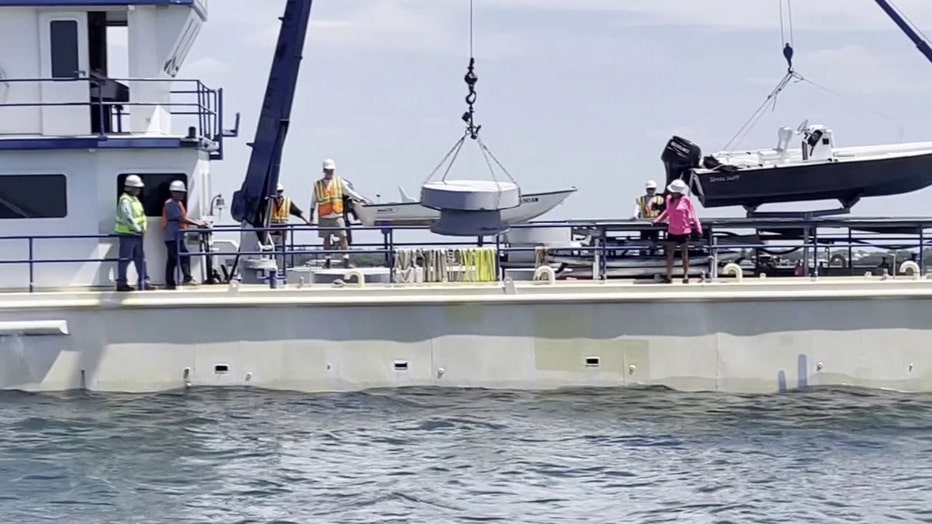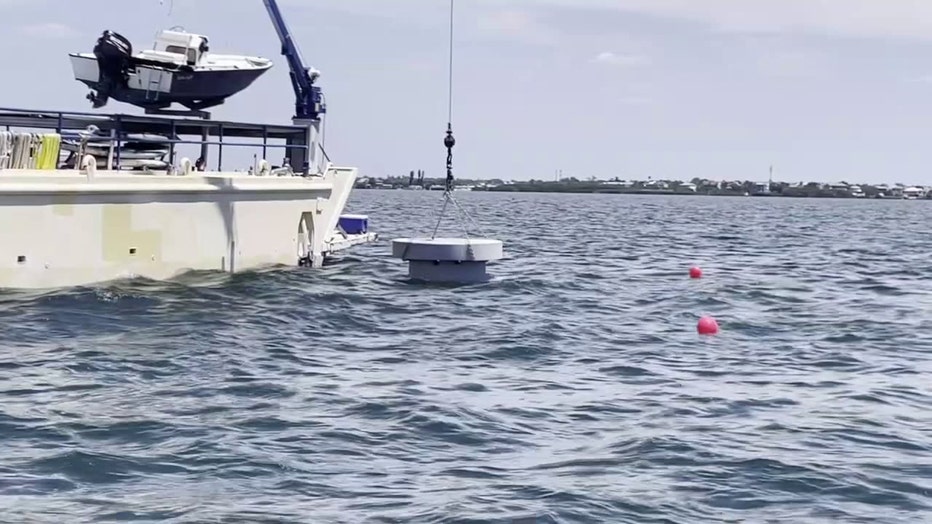24 artificial reefs deployed to help health of Sarasota Bay
SARASOTA, Fla. - More than 20 artificial reefs have been deployed in Sarasota Bay. The hope is for them to flourish and create a new habitat for commercial and recreational fish.
"If you want to catch fish off the Gulf of Mexico, either personally or have a grouper sandwich for dinner, then you have to have a healthy habitat for all life history stages," said Dr. David Tomasko, the director of the Sarasota Bay Estuary Program.
Tomasko watched as 24 artificial reefs were placed in six different locations throughout Sarasota Bay.
READ: DeSantis announces major investment in environmental protections on Earth Day
"We have to create the correct habitat and the right water quality conditions in places like Tampa Bay and Sarasota Bay to complete their life cycle, so we can have a healthy fish population both in the bay and offshore in the Gulf of Mexico," said Tomasko.

Sarasota Bay Estuary Program led the effort with funding from the Sarasota Sportsmens Association and the bipartisan infrastructure bill. Within a short time, in the summer, animals like sea squirts will attach to the reef, making it their home.
"These specifically have holes that small fish can get in," said Jay Leverone, the program scientist for Sarasota Bay Estuary Program. "They’re inside, there’s enough room for dozens of fish that school together. They’re protected from predators, and they feel secure."
Juvenile fish like snapper and grouper start their lives in Sarasota Bay. That’s one of many reasons why the bay’s health is vital.
MORE: Which states are the greenest? Report ranks most eco-friendly places in US
Tomasko and Leverone snorkeled down to Sportsman Reef to check on the progress of artificial reefs installed a decade ago. Through low visibility, fish can be seen in the reefs.

"The reef material itself is doing very well. It’s supporting life like we expected it," said Leverone.
From seagrass declining to mangroves being removed, the reefs offer refuge and make up for habitat loss.
"We are just trying to add additional opportunities even though they’re artificial preferred types of habitats for these fish, so the link in their life," said Leverone.
While the overall health of Sarasota Bay has improved in the last 15 years, the Sarasota Bay Estuary Program said there is still so much more to be done.
"That’s why the estuary program has been focused on doing habitat restoration indirectly through water quality improvement and directly through things we are seeing like today," said Tomasko.
WATCH FOX 13 NEWS:
SIGN UP: Click here to sign up for the FOX 13 daily newsletter

